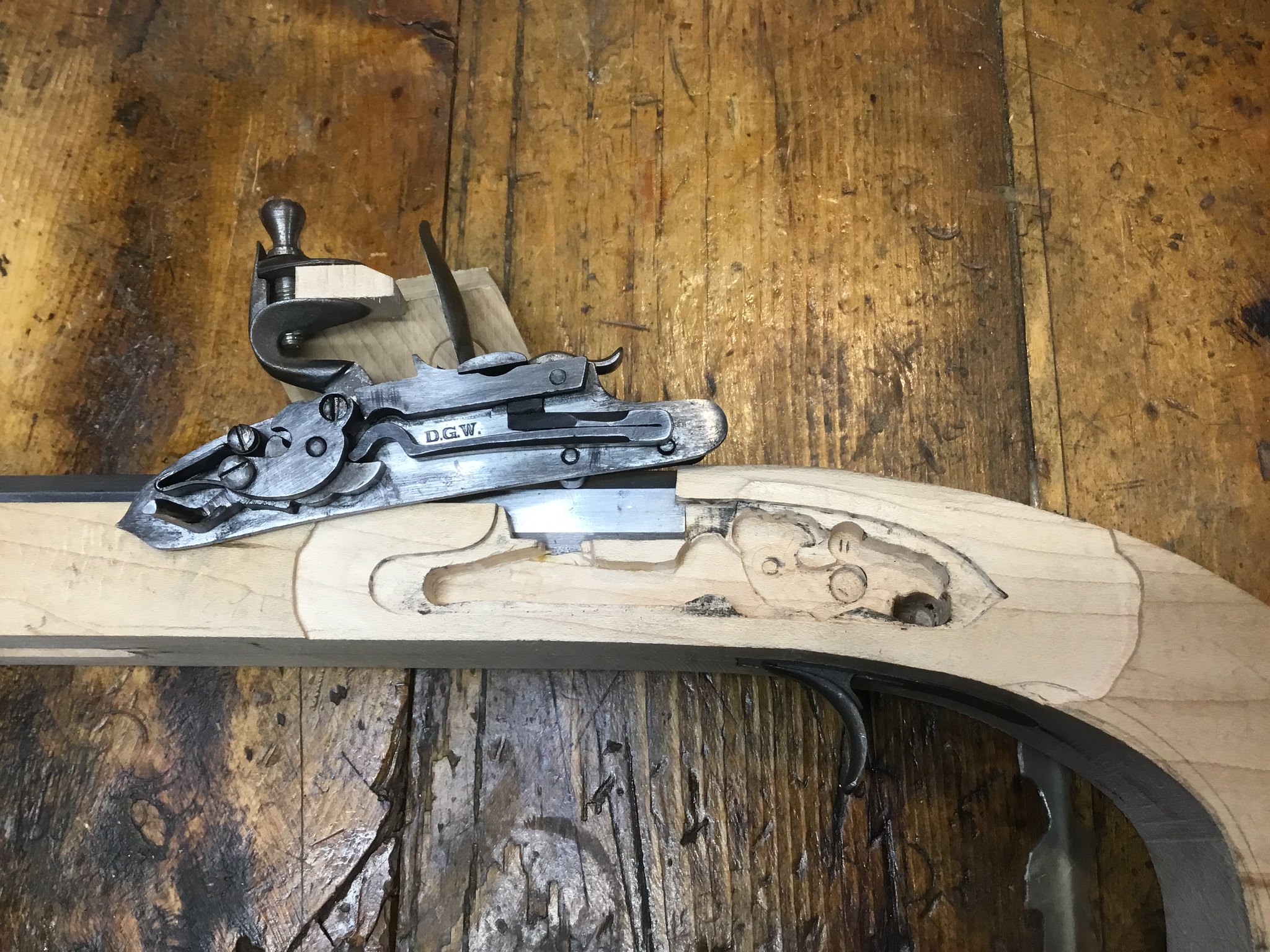Trapper1993
40 Cal
- Joined
- Nov 17, 2020
- Messages
- 102
- Reaction score
- 68
Used a drill and 2 chisels 1/8 & 1/4 chisel, one is solingen, the other is some czech company. I dont have any tools to add a flat surface except a small gouge and a dremel (yikes, i know) I sharpened the chisels every 30 minutes but the maple is so hard that its difficult to work with. I inlet the plate first then i added everything except the mainspring and trigger sear. Added the sear next and added the mainspring last. As you can see a used a good amount of inletting black. I still have a small gap between the pan and barrel that i may use shims on. I cant seem to lower the lock plate any more. I'm going to use acraglass to fill the gap between the end of the barrel and the wood. This is my first build that wasnt a preinlet, i've done 1 rifle before.


















